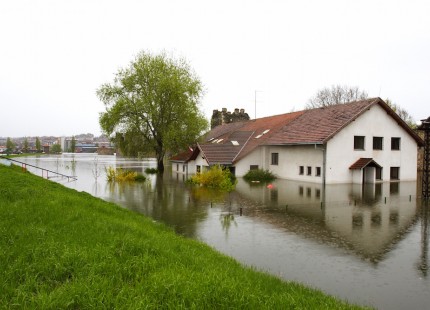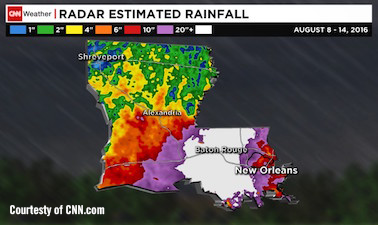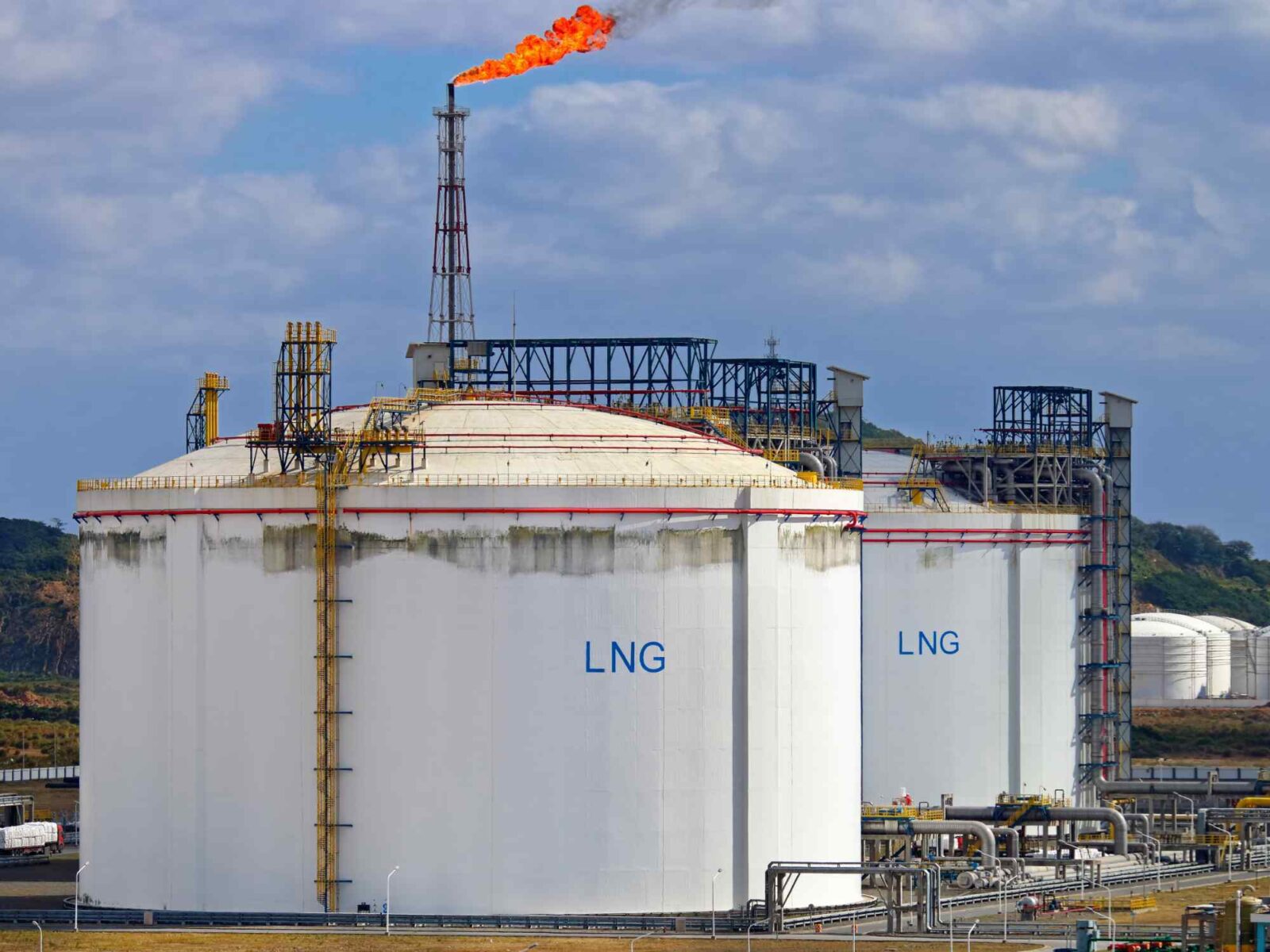Louisiana Flooding Leaves Most Vulnerable Struggling to Rebuild
Rebecca Anderson
|August 26, 2016

The massive flooding in Louisiana last week is being called a 500-year flood. 60,000 homes were damaged, 20,000 people were rescued from the flood and 13 people have lost their lives. The cleanup and recovery is only just beginning.
Unfortunately, this is the fifth once-in-500-years event that has hit the U.S. in the past year. Something is clearly going on here. According to NOAA, extreme rain events have increased 27% since the 1950s. What’s at the root of these events? You guessed it: climate change.
Of the many varied impacts of climate change, increased heavy rain and resulting flooding is one of the clearest. Warmer air holds more moisture. Kevin Trenberth of NCAR calculates that the atmosphere can hold 4% more moisture for every degree Fahrenheit of temperature rise.
This was exactly the case in Louisiana last week — the amount of “precipitable water” (amount of water in a column of air) measured in the atmosphere from a weather balloon over Slidell, LA on August 12 was the second highest value ever recorded. Add to that extra hot ocean temperatures in the Gulf of Mexico of near 90ºF and the stage was set for an enormous rain event.
Climate change, at its core, is a justice issue.

Over 30 inches of rain (31.19”) fell in one location over the course of the storm. That’s over two and a half feet.
Tragically, many of the 20,000 people forced to flee their homes may not have anything to go back to. As with Hurricane Katrina, Superstorm Sandy and so many other climate-change fueled disasters, those who have the fewest resources to adapt to these events are often the ones who bear the brunt of them.
The Federal Emergency Management Agency (FEMA) is the federal agency tasked with responding to natural disasters and providing assistance to those affected. However, while FEMA last updated its flood maps for much of Louisiana in 2011, “FEMA does not map flood hazards based on anticipated future sea levels or climate change,” according to FAQs on its website. This means that, according to the agency, a 500-year flood should still happen only once every 500 years, which doesn’t look to be the case anymore.
As a result, many homes are left out of floodplain maps and are therefore not required to have flood insurance. And, for many people, the roughly $750 a year for flood insurance is an expense they can’t afford. Without insurance, limited FEMA aid and loans are the only compensation available and many of the most vulnerable are left unable to recover.
Climate change, at its core, is a justice issue. And at ACE, we fight for justice for all people being affected. We know that climate change hits poor communities and communities of color first as well as worst. These are people stuck living on the frontlines of climate change — near sources of pollution from fossil fuel burning such as highways and power plants as well as in flood-prone areas. There is no time to wait. We must take collective climate action now to create just futures for Louisiana residents and all frontline communities.
Join our Youth Action Network
More Blog Posts

Our Climate Wins Were on Display at the State of the Union
Today, the Biden Administration temporarily halted all pending decisions on 17 Liquefied “Natural” Gas (LNG) projects across the Gulf South.
Read More
ACE Honored As An Anthem Awards Finalist
Action for the Climate Emergency (ACE) announced today that it won Bronze in Best Use of AI at the 3rd …
Read More
BREAKING: Biden Halts LNG Export Expansion
Today, the Biden Administration temporarily halted all pending decisions on 17 Liquefied “Natural” Gas (LNG) projects across the Gulf South.
Read More
